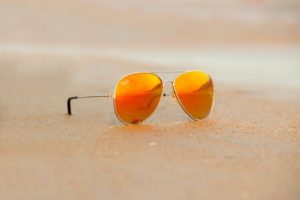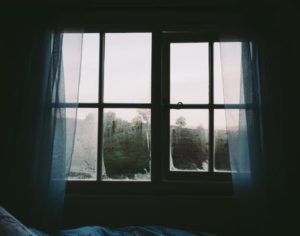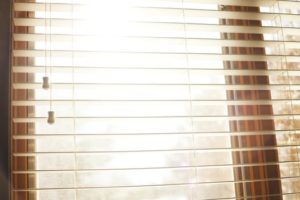
Avoiding Allergies
March 20th Spring bloomed in all its glory, but we also opened ourselves up to allergens that can take us off our A-game.
It’s a shame that Spring, as beautiful as can be, can manage to make you feel miserable from indoor allergies to dust and mold or hay fever caused by pollen. Not to mention, allergy symptoms can unfortunately last all year long but can be especially trying during this time of year.
Coughing, sneezing, itchy eyes, and runny nose are all challenges that many Americans face who have indoor and outdoor allergies. As you may already know, there isn’t a cure for most allergies, but there are definitely steps you can take to avoid them. Consider these 10 tips to help keep your allergies at bay so you can continue to provide the highest quality of care possible, against all odds!
Shield Yourself from Pollen with Sunglasses
Millions of Americans deal with wind-borne pollen or mold spores related hay fever. So how do you protect yourself? Sunglasses
are your best friend in this case since they can reduce the amount of pollen or spores that can get into your eyes. If you’ve ever experienced allergy-irritated eyes, you know your eyes can be even more sensitive to sunlight, so this particularly comes in handy utilize your favorite designer shades. Of course for fashion, but mostly because it may help your eyes feel better, too!
 Say goodbye to Pollen-Producing Indoor Plants
Say goodbye to Pollen-Producing Indoor Plants
The flowering indoor houseplants flower are most likely not causing a pollen allergy, since they’re pollinated by insects. However, indoor plant soil creates the opportunity to let plenty of mold spores into your house. In the event you have hay fever or a mold allergy, ditch the houseplants or at the very least keep them out of your bedroom. When the biggest offenders are indoor shrubs, trees, and grasses, it’s best to steer clear.
 Kill Dust Mites With a Hot Wash
Kill Dust Mites With a Hot Wash
Did you know one of the biggest causes of indoor allergies is the dust mite? Although microscopic, these insects live on things like bedding and stuffed animals. To combat these little guys, clean in a hot wash. Be sure to keep the kids’ stuffed animals off the bed, and wash sheets and blankets at least once a week.
 Take A Vacay From Pollen
Take A Vacay From Pollen
Since pollens tend to be worse in specific seasons when grasses, trees and weeds pollinate, identifying your trigger season is the first step to avoiding the worst pollen exposure. For instance, getting out of town for at least part is a great excuse for a vacation! A beach getaway is a great way to escape from pollen. Unfortunately, the likelihood of an allergy season long vacation isn’t a reality, so do your best to avoid pollen at home by keeping inside while pollen counts are high, especially mid-morning and windy days.
Control Mold: Adjust Humidity 
Mold thrives in moisture. To help control indoor mold, use a dehumidifier or your air conditioner to keep your home humidity close to 50 percent. Take the guesswork out of measuring indoor humidity with a device called a hygrometer. It’s also important to clean up water spills promptly, fix any leaks, and change the filters in your air conditioner and heating ducts regularly.
 Travel Wisely
Travel Wisely
Taking a road trip when the pollen count is high? Be sure to keep those car windows closed! Before setting out on your trip, turn on the AC, and let the air inside the car cool. Leave as early as possible or in the evening. Of course it’s also best to avoid high-allergy destinations. This includes: damp and cold climates (mold) or damp tropical climates (mites, molds, and pollens).
Clean Trouble Spots Well for Indoor Allergy Control
Control
Yes, your blinds, curtains and windows are the preferred hiding places for dust and mold! In poorly ventilated basements, laundry rooms,old books, and refrigerator drain. Hong suggests wiping down bathroom and kitchen areas with diluted bleach, and vacuuming your floors often. And make sure you wear a mask if you have an allergy to cleaning products in addition to the mold and dust!
Keep Outdoor Pollens Outside
Be very careful to keep outdoor pollens out of your home. Wearing a mask while working outside and removing your work clothes before entering the house are major in helping you keep the pollen at bay. A good shower right after coming in from the yard is a great help too.
When doing laundry, this is the best time to utilize your dryer instead of hanging your clothes outside. Leaving all windows closed during allergy season and using your air conditioner or dehumidifier to help protect you from indoor allergies will be beneficial too.
Control Irritants Along With Allergens
Believe it or not, strong odors such as perfumes, paint fumes, hair sprays, disinfectants, and air fresheners can also set off an allergy attack. Regardless if you have outdoor or indoor allergies, any substance that irritates your airways can make your symptoms worse, this includes smoking! Ask house guests to smoke outside, and avoid wood fires and wood-burning stoves in order to keep your allergies under control.
 Get Rid of Roaches and Rats
Get Rid of Roaches and Rats
Did you know that studies have shown that cockroaches and rats are a common cause of indoor allergy symptoms and asthma, especially in children? Removing water and food sources that may attract cockroaches is major step in minimizing their arrival. And of course, if you see a cockroach, get professional help!
Hopefully these tips will help you minimize any of those seemingly inevitable allergies and help you continue to offer quality care to your patients all season long!
